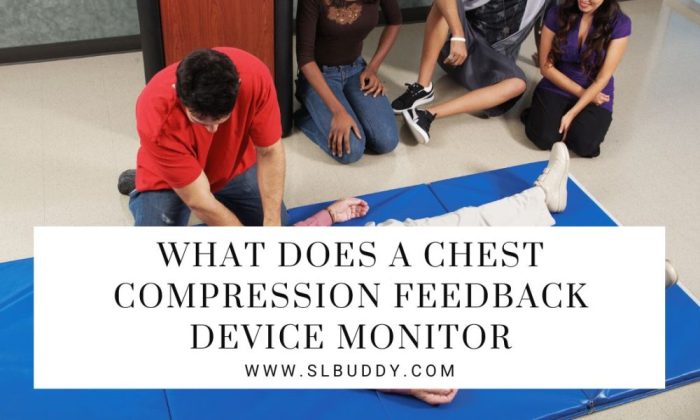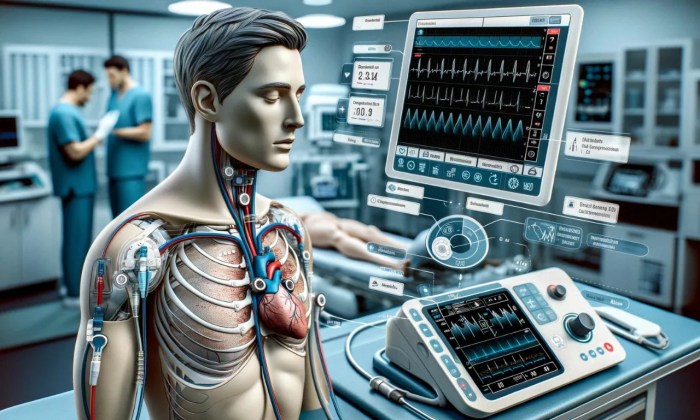Chest compression feedback device monitors have emerged as indispensable tools in cardiopulmonary resuscitation (CPR), revolutionizing the way we perform this life-saving procedure. These devices provide real-time feedback on the depth, rate, and recoil of chest compressions, enabling rescuers to optimize their technique and improve CPR outcomes.
The technology behind these devices relies on sensors that measure the force and displacement of the chest during compressions. This data is then processed and displayed on a monitor, providing rescuers with visual and auditory cues to guide their actions.
1. Chest Compression Feedback Devices
An Overview

Chest compression feedback devices play a critical role in cardiopulmonary resuscitation (CPR) by providing real-time feedback on the quality of chest compressions. These devices help rescuers deliver compressions at the correct depth, rate, and recoil, improving the effectiveness of CPR and increasing the chances of survival.
Types of Chest Compression Feedback Devices
- Mechanical devices:These devices use a mechanical sensor to measure compression depth and rate. They typically provide audible and visual feedback.
- Impedance-based devices:These devices use impedance technology to measure compression depth and recoil. They provide continuous feedback on the device’s display.
- Accelerometer-based devices:These devices use accelerometers to measure compression rate and depth. They provide feedback through a smartphone or tablet app.
Advantages of Chest Compression Feedback Devices
- Improved compression quality
- Reduced variability in compression technique
- Increased rescuer confidence
- Potential for improved patient outcomes
Disadvantages of Chest Compression Feedback Devices
- Cost
- Potential for false readings
- Need for training and practice
2. How Chest Compression Feedback Devices Work

Chest compression feedback devices use various technologies to measure and provide feedback on compression depth, rate, and recoil.
Measuring Compression Depth
- Mechanical devices:Use a mechanical sensor to measure the distance the chest is compressed.
- Impedance-based devices:Measure the change in impedance between the chest and the device’s electrodes.
- Accelerometer-based devices:Measure the acceleration of the chest during compression.
Measuring Compression Rate
- Mechanical devices:Use a sensor to count the number of compressions per minute.
- Impedance-based devices:Measure the frequency of impedance changes during compression.
- Accelerometer-based devices:Measure the frequency of acceleration peaks during compression.
Measuring Recoil
- Impedance-based devices:Measure the change in impedance during the relaxation phase of compression.
- Accelerometer-based devices:Measure the acceleration of the chest during the relaxation phase of compression.
Factors Affecting Accuracy
- Patient factors (e.g., body size, chest stiffness)
- Rescuer factors (e.g., technique, fatigue)
- Device factors (e.g., calibration, placement)
3. Using Chest Compression Feedback Devices Effectively: Chest Compression Feedback Device Monitors
Proper use of chest compression feedback devices is essential to maximize their effectiveness.
How to Use Chest Compression Feedback Devices
- Position the device correctly on the patient’s chest.
- Ensure the device is calibrated and tested before use.
- Follow the device’s instructions for interpreting feedback.
- Adjust compression technique as needed to achieve the desired feedback.
Interpreting Feedback
- Compression depth:Aim for a depth of 2-2.4 inches (5-6 cm) for adults.
- Compression rate:Aim for a rate of 100-120 compressions per minute.
- Recoil:Aim for complete recoil of the chest after each compression.
Importance of Training and Practice
- Training ensures proper device use and interpretation of feedback.
- Practice helps rescuers become proficient in using the devices.
- Regular practice and feedback can improve compression quality.
4. Impact of Chest Compression Feedback Devices on CPR Outcomes

Evidence suggests that chest compression feedback devices can improve CPR outcomes.
Improved Compression Quality
- Studies show that devices help rescuers achieve more consistent and accurate compressions.
- Improved compression quality can increase blood flow to the heart and brain.
Reduced Mortality and Morbidity, Chest compression feedback device monitors
- Some studies have shown a reduction in mortality and morbidity when devices are used during CPR.
- However, more research is needed to confirm the long-term impact on patient outcomes.
Areas for Further Research
- Effectiveness in different patient populations (e.g., children, elderly)
- Long-term impact on patient survival and neurological outcomes
- Cost-effectiveness of devices
5. Current and Future Developments in Chest Compression Feedback Devices
Advancements in technology are improving the accuracy, reliability, and usability of chest compression feedback devices.
Current Developments
- Miniaturization and wireless connectivity
- Integration with other CPR devices (e.g., defibrillators)
- Improved algorithms for feedback and guidance
Future Directions
- Personalized feedback based on patient characteristics
- Real-time monitoring of CPR quality during transport
- Integration with artificial intelligence (AI) for automated CPR guidance
Q&A
What are the benefits of using chest compression feedback devices?
Chest compression feedback devices provide real-time guidance, ensuring that compressions are performed at the correct depth, rate, and recoil, leading to improved CPR quality and patient outcomes.
How do chest compression feedback devices work?
These devices use sensors to measure the force and displacement of the chest during compressions. The data is then processed and displayed on a monitor, providing rescuers with visual and auditory cues to guide their actions.
Are chest compression feedback devices accurate?
The accuracy of chest compression feedback devices can be affected by factors such as the patient’s body composition, the device’s placement, and the rescuer’s technique. However, studies have shown that these devices can significantly improve CPR quality when used correctly.